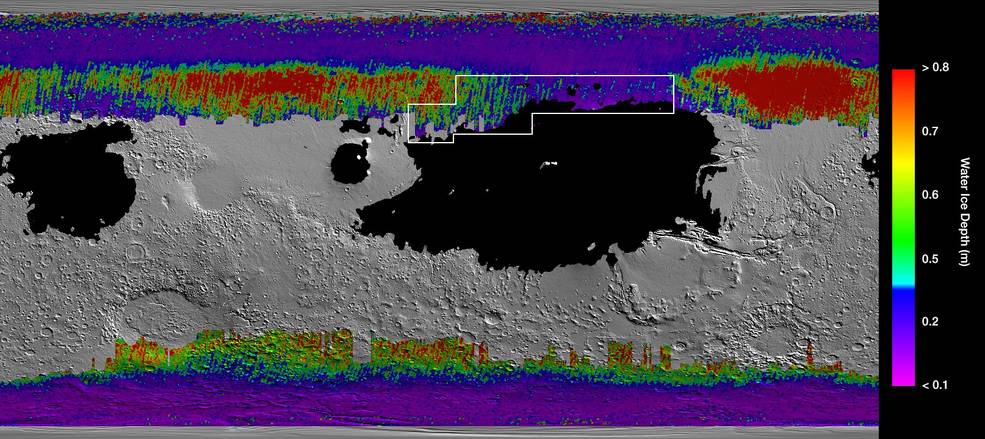
Space agencies around the world, including NASA, are competing to develop the technology needed to send astronauts to the moon. This is also a step towards Mars in the future.
It is difficult to reach Mars right now, but it is important to consider where to arrive and get off Mars. Until now, manned space flights departing from Earth went out to space with all the essential supplies for survival, including heavy water. But when you go to Mars, the story is completely different. Water, both drinking water and fuel, must be sourced locally.
According to a recent study, NASA found that water ice in the basement of Mars through observation data from Mars Reconnaissance Orbiter (MRO) and 2001 Mars Odyssey. I wrote and released it.
Mars underground ice is an essential element for astronauts to survive in the field. This map can be said to have the same value as a map showing the location of gold burials going to Mars in the future. The map shows the colored areas of Mars from mid-latitude to high latitudes as easy to find ice. In addition, the area enclosed by the white border is the Arcadia Plain, which is believed to have eroded past glacial topography, making it one of the most likely places for ice.
Also, the purple part in the map is a place where you may not know if there is ice 2-3cm below the line. In this part, it is estimated that ice will stick out if you dig a little with a shovel without the need for an excavator. The black part on the map is where the dust has accumulated and is not suitable for landing the probe.

Mars has a thin atmosphere and liquid water evaporates and disappears. However, if it is ice, the water is stable and stops there. NASA photographed it in June 2008 through a Phoenix lander to spot a white mass that appeared to be ice on the surface. This mass disappeared a few days later when filmed at the same location. It is presumed that the ice melted and evaporated.
Liquid water is believed to exist in a subterranean area called a glacier in the Arctic of Mars, and the map information will eventually allow NASA to determine how and where to send astronauts to Mars. Related information can be found here .


















Add comment